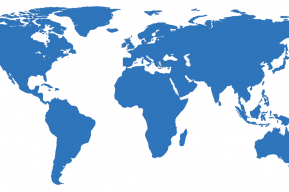Although services dominate the economy in Southern Africa (chapter 20), it is manufacturing that has been identified as a key growth engine.
Several countries are exploring e-governance to improve the delivery of public services and make it easier to do business, including Madagascar and Namibia. However, a lack of private-sector competition has made digital services unaffordable for many citizens and businesses, even as the geographical coverage of communication infrastructure has expanded.
South Africa is the only country with a strong patenting record. Malawi and Namibia have taken steps to strengthen their intellectual property regime. In 2018, ministers adopted the SADC Regional Framework and Guidelines on Intellectual Property Rights to foster mutual co-operation on reforming national intellectual property regimes.

Half of countries have published explicit STI policies since 2010. Others have plans to develop or update their own strategies, including the Democratic Republic of Congo, Malawi, Lesotho, Tanzania and Zambia.
Only Mauritius, the Seychelles and South Africa have an electrification rate above 50%. Since the Southern African Development Community (SADC) opened a Centre for Renewable Energy and Energy Efficiency in Namibia in 2015, the share of renewables in the region’s power supply has risen from 24% to 39% (2018).
Through partnerships with the African Development Bank, World Bank and others, countries are expanding the electricity grid and off-grid solutions. The Democratic Republic of Congo’s plans to build the massive Grand Inga dam have raised social and environmental concerns.
Hydropower accounted for about 81% of Zambia’s installed generation capacity in 2019 but insufficient rainfall has made it an unreliable resource. In 2019, the government introduced a feed-in-tariff scheme for small-scale solar and small hydropower projects. In 2020, it adopted a National Nuclear Policy to help curtail reliance on hydropower.
South Africa is leading the development of an African Open Science Platform to facilitate international collaboration and data-intensive research. The country also hosts the Square Kilometre Array, the world’s largest telescope. It holds great potential for stimulating scientific mobility and intra-African scientific collaboration and applications in fields such as AI and big data.
developed worldwide to support the Covid-19 response
of the world’s largest telescope, the Square Kilometre Array, led by South Africa
- Figure 20.1: Socio-economic trends in Southern Africa
- Table 20.1: Selected programmes adopted by the SADC Secretariat since 2015
- Figure 20.2: Active tech hubs in Africa, 2020
- Figure 20.3: Number of IP5 patents granted to inventors from Southern Africa, 2015–2019
- Figure 20.4: Trends in research expenditure in Southern Africa
- Figure 20.5: Trends in researchers in Southern Africa
- Figure 20.6: Scientific publishing on cross-cutting strategic technologies in sub-Saharan Africa
- Figure 20.7: Trends in scientific publishing in Southern Africa
- Box 20.1: The radio telescope at the heart of the Fourth Industrial Revolution
- Box 20.2: A pan-African vision for science
- Box 20.5: The African Open Science Platform






